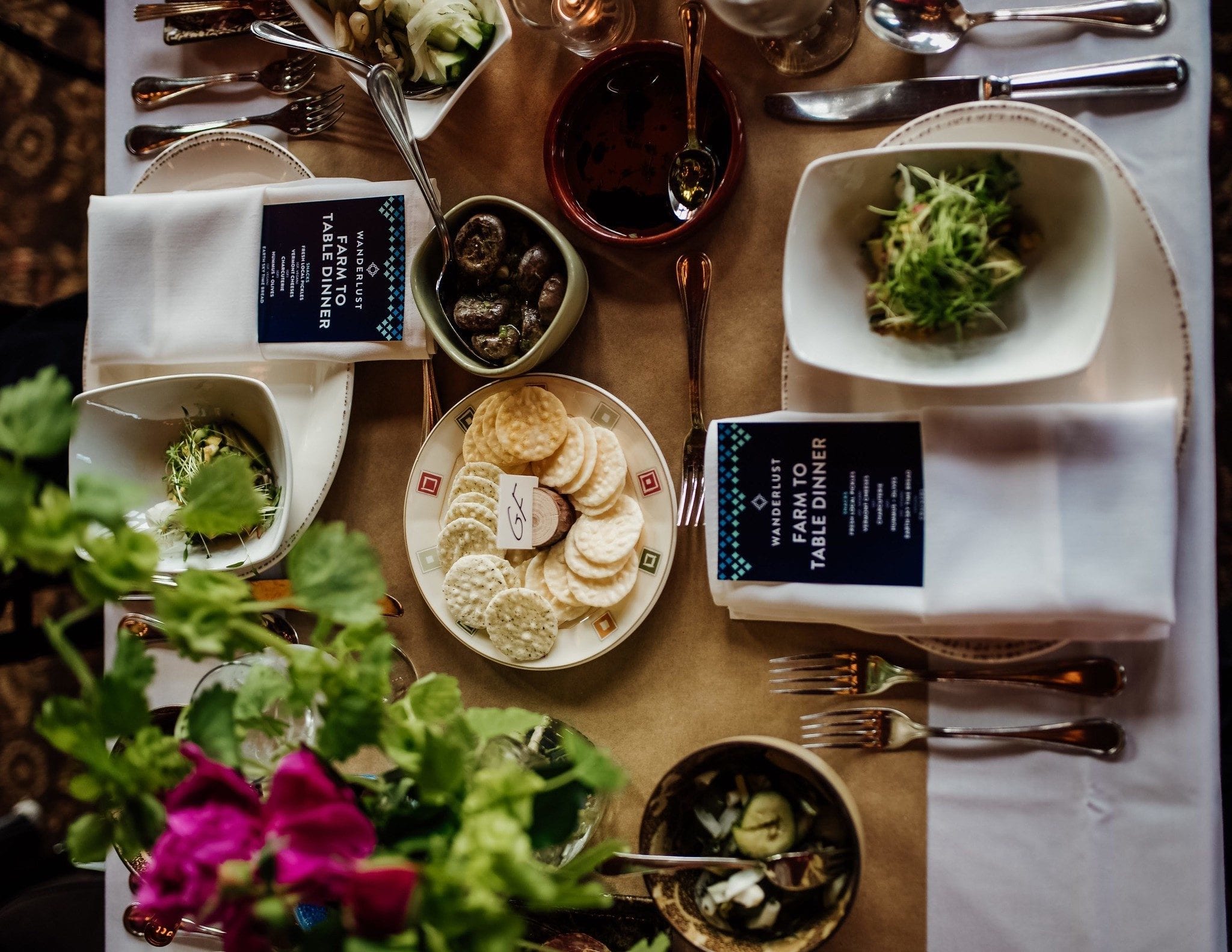
A farm-to-table dinner is one of many experiences awaiting you at a Wanderlust Festival. Find out more | Buy tickets
Forty-five years ago, in the bustling bohemia of San Francisco, Alice Waters and a group of idealistic friends imagined a restaurant that had the intimacy of a dinner party with a menu that supported a sustainable environment. Quality ingredients were a must, and flavor was paramount. To some, the idea may have seemed preposterous (this was a time where microwave ovens were all the rage), but Waters was determined to combine the fresh fare of a garden with the communal setting of public dining. Thus, the farm-to-table movement was born.
Since then, farm-to-table movement has spread across the United States. Within the last 10 years, the trend has exploded, leading to its own sassy abbreviation of F2T. Nowadays, it’s as much a buzzword as „locavore“ and „natural,“ with various restaurants claiming the title to draw in more customers. We live in a world where tattoo-laden fruit snacks are out and organic is in. Heck, when I was living in Cincinnati even the Airheads were labeled as „local.“
Unfortunately, the rising trend has made it harder to find the real deal. Many places, while preaching their moral superiority for using „happy cows“ and naming their herb gardens, lack the authenticity and attention-to-detail found in places like Chez Panisse. The big corporations have caught on to the farm-to-table trend are looking to draw in those consumers. Remember the McDonald’s commercial with the dairy farmers?
This brings up a controversial argument. On one hand, having so many companies and restaurants embrace the farm-to-table movement illustrates the power society has to change our country’s eating habits. The demand for better food has been noticed, and many of the country’s top food corporations (Subway and Cheerios, to name a few) are racing to fit new expectations. For those families who don’t have the time or resources to consistently shop farm-to-table, this is a good thing.
On the other hand, the increased popularity spurred by a buzzword may taint the integrity of authentic farm-to-table restaurants. If a place is latching onto the label purely to make a buck, we might forget why we fell in love with farm-to-table in the first place. It’s one of the most basic and instinctual forms of eating. As a child I remember biking on the path alongside the a creek, long before the forest was paved to make room for our county’s 300th elementary school. My friends and I dropped our helmets and peeled off our Keds in order to wade through the water and fill our hands with wild berries. At home, my mother chased birds away from the fig tree and rubbed fresh rosemary into my palms.
We like farm-to-table because it nurtures a universal urge to feel connected to our food on some emotional level. Understanding the origins of specific ingredients puts us in touch with a meal’s story. It gives the food personality and helps consumers cultivate appreciation. Some restaurants are taking the label to the next level, and sourcing their entire menu from farms located on the restaurant’s premise.
The Restaurant at Patowmack Farm is one example. Established in 1986, the restaurant–farm combo has consistently been dedicated to providing long-term benefits to the land while providing a quality dining experience. The restaurant itself strives to expose diners to the beauty of Appalachian agriculture, with an open-air tent for warm summer nights and a heated glass observatory in the winter months. The menu is always changing, but as of March 4th, 2016, they’re serving things like oyster chowder and a butternut merengue pie.
Another perk to authentic farm-to-table dining experiences is their ability to spark conversation. Too often we consume without much attention to our foods or our dining partners, but farm-to-table brings those worlds together. When I’m back in Virginia, my mother and I sometimes venture out for a treat at Magnolia’s at the Mill, a nearby restaurant featuring fare from the local farmers. Upon each bite we discuss the layering of flavors, the multitude of temperatures and textures woven together to create our meal. Even the whiskey has a story, beginning its journey at a distillery within a five-minute walk.
The farm-to-table dining option doesn’t need to disappear just because it’s become the food industry’s hottest new label; it simply means we may need to do a bit of hunting in order to find the „real deal“ establishments.
What are some of your favorite farm-to-table experiences?
—

Amanda Kohr is a 25-year-old writer and photographer with a penchant for yoga, food, and travel. She prefers to bathe in the moonlight rather than the sun, and enjoys living in a state of the three C’s: cozy, creative, and curious. When she’s not writing, you can find her driving her VW Bug, looking for the next roadside attraction or family diner. She also roams the internet at amandakohr.com and through Instagram.